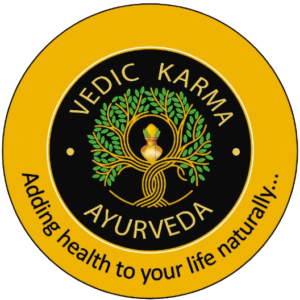Panchakarma is an integral and profound aspect of Ayurveda, the ancient system of holistic healing originating from India. The term “Panchakarma” can be broken down into two parts: “Pancha,” meaning five, and “Karma,” meaning actions or therapies. It refers to a set of therapeutic procedures designed to purify, detoxify, and rejuvenate the body, mind, and spirit.
The primary goal of Panchakarma is to eliminate accumulated toxins (ama) from the body and restore the balance of the doshas—Vata, Pitta, and Kapha. These therapies are typically administered in a specific sequence, tailored to an individual’s constitution and current state of health.
The Five Actions of Panchakarma:
- Vamana (Emesis): This therapy involves controlled therapeutic vomiting to expel excess Kapha dosha from the upper respiratory and digestive tract. It is particularly beneficial for conditions such as asthma, bronchitis, and allergies.
- Virechana (Purgation): Virechana aims to eliminate excess Pitta dosha and toxins from the gastrointestinal tract through the administration of purgative substances. It helps in treating liver disorders, skin diseases, and digestive issues.
- Basti (Enema): Basti is considered one of the most important Panchakarma therapies and involves the administration of herbal decoctions and oils through the rectum. It is beneficial for balancing Vata dosha and is often used in the management of conditions like arthritis, constipation, and neurological disorders.
- Nasya (Nasal Administration): This therapy involves the administration of herbal oils, powders, or medicated fluids through the nasal passages. Nasya is primarily used to address disorders of the head and neck, including sinusitis, headaches, and migraines. It is also believed to have a positive impact on mental clarity and cognitive function.
- Rakta Mokshana (Bloodletting): While not as commonly practiced as the other four actions, Rakta Mokshana involves the controlled removal of a small amount of blood to eliminate impurities and toxins from the bloodstream. It is typically reserved for specific conditions related to blood disorders.
- Vamana: Is one of the five therapeutic procedures (Panchakarma) in Ayurveda, the traditional system of medicine from India.
- Virechana: Is one of the five therapeutic procedures (Panchakarma) in Ayurveda, the traditional system of medicine from India.
- Niruha
- Anuvasana
- Nasya: Also spelled as Nasyam, is one of the therapeutic procedures in Panchakarma, the traditional Ayurvedic system of detoxification and rejuvenation. Nasya involves the administration of medicated substances through the nasal passages.
The Panchakarma Process:
- Preliminary Procedures (Purvakarma): Before the main Panchakarma therapies, preparatory measures are taken to prepare the body for detoxification. This may include oleation (external and internal application of oils), sweating therapies, and dietary adjustments.
- Main Procedures (Pradhana Karma): The primary Panchakarma therapies are then administered based on the individual’s dosha imbalance and health condition. The choice of therapies is determined through careful assessment by an Ayurvedic practitioner.
- Post-Therapeutic Measures (Paschatkarma): After the completion of the main procedures, post-therapeutic measures are implemented to help the body gradually return to its normal state. This may involve specific dietary guidelines, lifestyle recommendations, and herbal supplements
Benefits of Panchakarma:
- Detoxification: Panchakarma helps eliminate accumulated toxins from the body, promoting overall health and well-being.
- Balancing Doshas: By addressing imbalances in the doshas, Panchakarma aims to restore harmony to the body and mind.
- Enhanced Digestion: The therapies aid in improving digestive functions, leading to better absorption of nutrients.
- Stress Reduction: Panchakarma includes practices that promote relaxation and stress reduction, contributing to mental well-being.
- Improved Immunity: The removal of toxins and the restoration of balance can enhance the body’s natural defense mechanisms.

